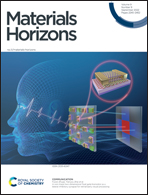Plasmonic metal oxides and their biological applications
Abstract
Metal oxides modified with dopants and defects are an emerging class of novel materials supporting the localized surface plasmon resonance across a wide range of optical wavelengths, which have attracted tremendous research interest particularly in biological applications in the past decade. Compared to conventional noble metal-based plasmonic materials, plasmonic metal oxides are particularly favored for their cost efficiency, flexible plasmonic properties, and improved biocompatibility, which can be important to accelerate their practical implementation. In this review, we first explicate the origin of plasmonics in dopant/defect-enabled metal oxides and their associated tunable localized surface plasmon resonance through the conventional Mie–Gans model. The research progress of dopant incorporation and defect generation in metal oxide hosts, including both in situ and ex situ approaches, is critically discussed. The implementation of plasmonic metal oxides in biological applications in terms of therapy, imaging, and sensing is summarized, in which the uniqueness of dopant/defect-driven plasmonics for inducing novel functionalities is particularly emphasized. This review may provide insightful guidance for developing next-generation plasmonic devices for human health monitoring, diagnosis and therapy.



 Please wait while we load your content...
Please wait while we load your content...